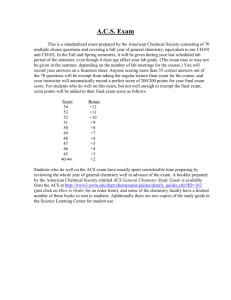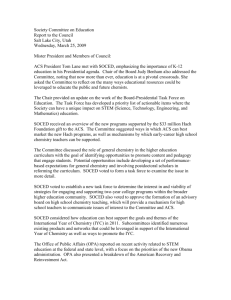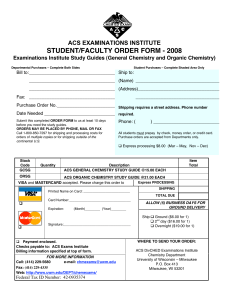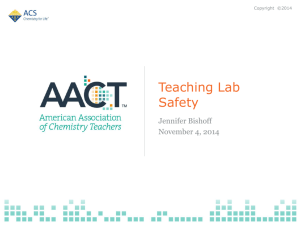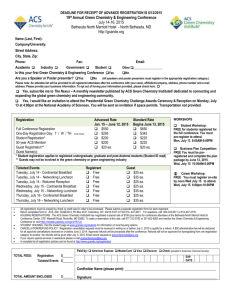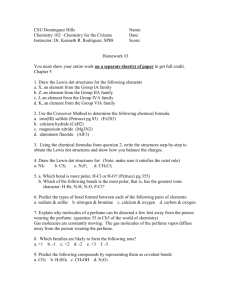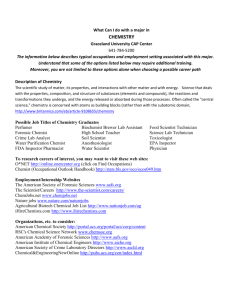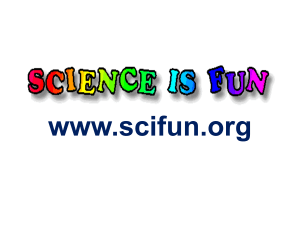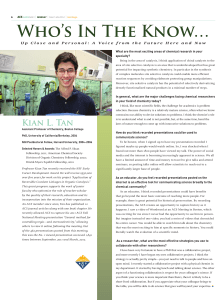QUIZ 3 – TAKE HOME
advertisement
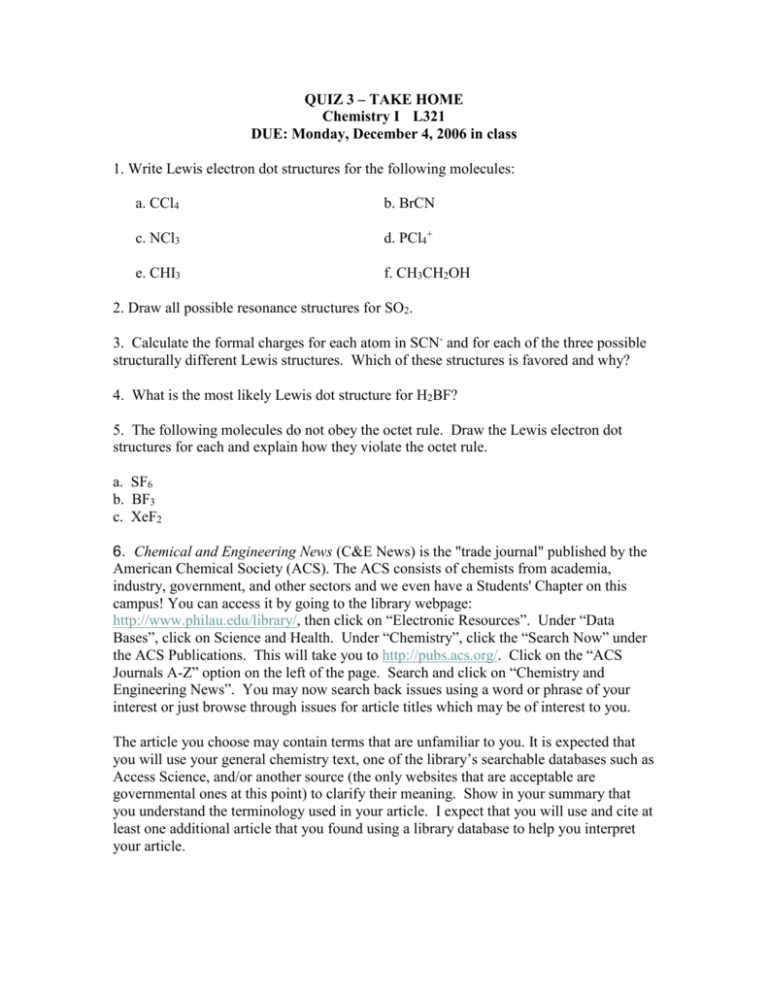
QUIZ 3 – TAKE HOME Chemistry I L321 DUE: Monday, December 4, 2006 in class 1. Write Lewis electron dot structures for the following molecules: a. CCl4 b. BrCN c. NCl3 d. PCl4+ e. CHI3 f. CH3CH2OH 2. Draw all possible resonance structures for SO2. 3. Calculate the formal charges for each atom in SCN- and for each of the three possible structurally different Lewis structures. Which of these structures is favored and why? 4. What is the most likely Lewis dot structure for H2BF? 5. The following molecules do not obey the octet rule. Draw the Lewis electron dot structures for each and explain how they violate the octet rule. a. SF6 b. BF3 c. XeF2 6. Chemical and Engineering News (C&E News) is the "trade journal" published by the American Chemical Society (ACS). The ACS consists of chemists from academia, industry, government, and other sectors and we even have a Students' Chapter on this campus! You can access it by going to the library webpage: http://www.philau.edu/library/, then click on “Electronic Resources”. Under “Data Bases”, click on Science and Health. Under “Chemistry”, click the “Search Now” under the ACS Publications. This will take you to http://pubs.acs.org/. Click on the “ACS Journals A-Z” option on the left of the page. Search and click on “Chemistry and Engineering News”. You may now search back issues using a word or phrase of your interest or just browse through issues for article titles which may be of interest to you. The article you choose may contain terms that are unfamiliar to you. It is expected that you will use your general chemistry text, one of the library’s searchable databases such as Access Science, and/or another source (the only websites that are acceptable are governmental ones at this point) to clarify their meaning. Show in your summary that you understand the terminology used in your article. I expect that you will use and cite at least one additional article that you found using a library database to help you interpret your article. Write an approximately half to one page (single spaced) summary of the article, IN YOUR OWN WORDS. You should: 1. Succinctly summarize the article. The summary should highlight the main points of the article. Do not use quotes from the article. Rephrase the main points in your own words. Review the information on how to write a summary posted on Blackboard or online at http://www.philau.edu/learning/writingasummary.htm. 2. In a separate short paragraph, discuss why (or why not perhaps) the article interests you. 3. Use clear, concise language. Writing about chemistry requires that you be precise in your use of language. Flowery phrases or complex analogies are neither necessary nor acceptable.
